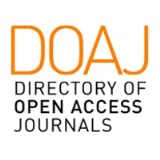Using virtual tools for developing autonomous learning and teaching communicative English for professional purposes in primary education
DOI:
https://doi.org/10.58265/pulso.5197Keywords:
English for Professional Purposes, new technologies, communicative, collaborative and autonomous learningAbstract
This article reflects how to learn and teach English carrying out collaborative activities related to the professional profile of the subject Foreign Language (English) in Primary Education using blended learning, the Internet and different technological applications (virtual platform, blogs and Youtube) as effective means for developing a communicative task-based approach. Considering that learning English for Specific and Professional Purposes involves identifying the students´ needs (learning English in order to subsequently teach it to future teachers of Primary Education) and practising in real contexts such as the Web 2.0, this paper explores the use of new educational trends and the technical integration of different skills in foreign language acquisition while facilitating self-evaluation and autonomous learning. This study outlines how teaching and learning contents related to the student´s future profession using new technologies involves English language acquisition through the students´ exposure in real constructive and communicative contexts.
Downloads
References
Arnó Maciá, E.; Rueda Ramos, C. y Soler Cervera, A. (2009). Teaching Academic and Professional English Online: González-Pueyo, Foz, Jaime, Luzón (Eds), Bern: Peter Lang AG.
Barrios, E., y Costell, E. (2004). “Review: Use of methods of research into consumers´opinions and attitudes in food research” en Food Science Technology International, 10 (359-371).
Beatty, K. (2003). Teaching and Researching Computer Assisted Language Learning. London: Pearson Education, Longman.
Berdugo Torres, M. (2001). Integración de tecnologías multimedia en la enseñanza de lenguas. En Lenguaje 28. Cali: Universidad del Valle. Recuperado de www.univalle.edu.co/~eslengua/ELAC.
Chickering , A. Y Gamson, Z.F. (1987). Seven principles for good practice in undergraduate education. AAHE Bulletin, 39.7 (pp.3-7).
Dudeney, G. y Hockly, N. (2007). How to Teach English with Technology. Essex: Pearson Education Ltd.
Dudeney, G., Hockly, N., Pegrum, M. (2013). Digital Literacies. New York: Routledge.
Dudley-Evans, T. y St John, M. J. (1998). Developments in English for Specific Purposes. Cambridge: Cambridge University Press.
Duffy, P. (2008). Engaging the YouTube Google-eyed generation: Strategies for using Web 2.0 in teaching and learning. The Electronic Journal of e-Learning, 6 (pp.119-130). Recuperado de http://www.ejel.org/volume6/issue2/p119.
Ellis, M. y Jonson, C. (1994). Teaching Business English. Oxford: Oxford University Press.
Esch, E. (1996). Promoting learner autonomy: criteria for the selection of appropriate methods. En Pemberton, R., Li, E., Or, W. F. y Pierson, H. D. (Eds.). Taking Control: Autonomy in Language Learning, (pp. 35- 48). Hong Kong: Hong Kong University Press.
Flynn, M. (2012). ESL Children's Drama Games: teach children English using drama and puppets. Recuperado de http://esldramagames.com.
Grünewald, A. (2009). La motivación de los alumnos en la clase de lengua extranjera. Resultados de una investigación empírica en el contexto del uso de las tecnologías de comunicación e información. Pulso. Revista de Educación, 32 (pp.55-75).
Holec, H. (1981). Autonomy and foreign language learning. Oxford: Pergamon. (Primera publicación en 1979, Strasbourg: Council of Europe).
Hutchinson, T. y Waters, A. (1987). English for Specific Purposes: a Learning Centred Approach. Cambridge: Cambridge University Press.
Hyland, K. (2003). Second Language Writing. New York: Cambridge University Press.
Kaplan, M., & Haenlein, M. (2010). Users of the world, unite!. The challenges and opportunities of social media. Business Horizons, 53.1 (pp.59).
Kay, J. (2010). British Council - Teaching Speaking Techniques. Recuperado de http://www.youtube.com/watch?v=LF7zsz8fi64
Little, D. (1991). Learner Autonomy; Definitions, Issues and Problems. Dublin: Authentik.
Luzón, M.J.(2009). Learning Academic and Professional English Online: Integrating Technology, Language Learning and Disciplinary knowledge. En González-Pueyo, Foz, Jaime, Luzón (Eds), Teaching Academic and Professional English Online (pp. 11-33). Bern: Peter Lang AG.
Malhotra, N. K. (1997). Investigación de mercados. Un enfoque práctico, (2ªed.). México: Prentice Hall.
Marco Común Europeo de Referencia para las Lenguas: aprendizaje, enseñanza, evaluación. MCERL (2002). Madrid: Anaya, Instituto Cervantes y Ministerio de Educación, Cultura y Deporte. Recuperado de http://cvc.cervantes.es/ensenanza/biblioteca_ele/marco/cvc_mer.pdf.
Miles, M. B. y Huberman, A.M. (1994). Qualitative Data Analysis: An Expanded Sourcebook (2ª ed.). Thousand Oaks, CA: Sage.
Miller, C. (2007). “Using web 2.0 technologies as a Business English catalyst”, comunicación presentada en la conferencia XX Annual BESIG Conference, el 17 de Noviembre 2007, Berlín.
Pardo Díaz, S. (2009). Plataformas virtuales para la educación. En Taller Digital de la Universidad de Alicante. Recuperado dehttp://www.eltallerdigital.com/informacion.jsp?idArticulo=77.
Perez, I. (2012). Teaching English to Primary Education. Recuperado de http://teslbyisabelbp.blogspot.com.es/search/label/Primary%20Education.
Senser, R. (2012). The future of learning. Recuperado de http://www.youtube.com/watch?v=xoSJ3_dZcm8.
Trebbi, T. (1990). Report on Developing Autonomous Learning in the FL Classroom. En Universitetet I Bergen, Institutt fir praksiskpedagogikk, Bergen: Mimeographed.
Ur, P. (1996). A course in English Language Teaching. Cambridge: Cambridge University Press.
Van Lier, L. (1996). Interaction in the Language Curriculum: Awareness, Autonomy, and Authenticity. London: Longman.
Vieira, M. J., Vidal, J. y Barrio, S. (2007). Una herramienta de evaluación para comparar la experiencia académica de los estudiantes universitarios. Revista de Investigación Educativa, 25.2 (pp.327-350).
Vygotsky, L.S. (1972). Pensamiento y lenguaje. Buenos Aires: La Pléyade.
Warschauer, M., Schetzer, H. y Meloni, C. (2000). Internet for English Teaching. Alexandria, VA: TESOL Inc.
Waters, A. y Waters, M. (2001). Designing Tasks for Developing Study Competence and Study Skills in English. En Flowerdew, J. y Peacock, M. (Eds.) Research Perspectives on English for Academic Purposes (pp.375-89). Cambridge: Cambridge University Press.
White, C. (2003). Language Learning in Distance Education. Cambridge: Cambridge University Press.
Downloads
Published
How to Cite
Issue
Section
License
Copyright (c) 2022 Pulso. Revista de educación

This work is licensed under a Creative Commons Attribution-NonCommercial-NoDerivatives 3.0 Unported License.
This journal offers immediate open access to its content based on the idea that offering readers free access to research favours a global exchange of knowledge.
Papers are published in the electronic version of the journal under a Creative Commons License: Attribution-NonCommercial-No derivatives 4.0 International
Authors are allowed and encouraged to promote the post-print version (reviewed and accepted for publication version) of their work online before publishing them. This favours their earlier circulation and dissemination and thus a possible increase in their citation and reach among the academic community.













